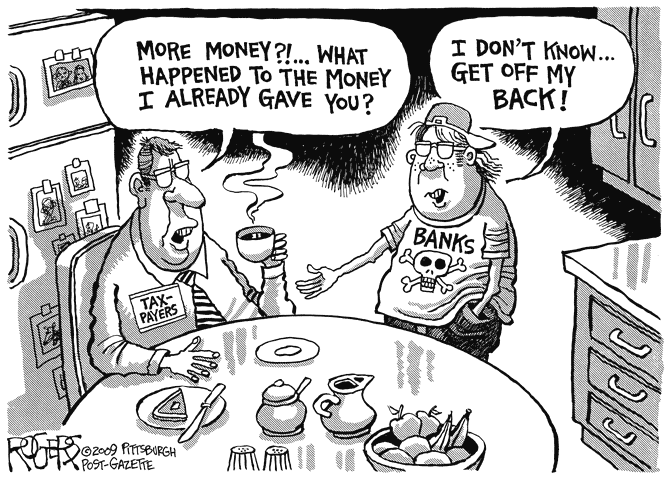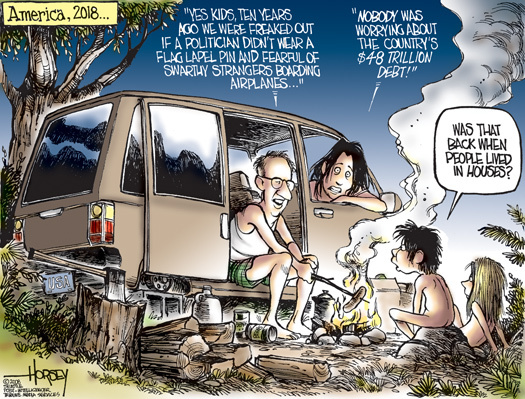As Wall Street chief executive officers flock to the World Economic Forum, they’ll be breathing a sigh of relief along with the Swiss mountain air: There are no panels on compensation or redesigning financial regulation.
After spending much of last year’s meeting defending the industry and debating proposed rules, bankers plan to focus on wooing clients and winning business, according to executives at three Wall Street companies, who spoke anonymously because they weren’t authorized to comment publicly.
The bankers will be coming to Davos, Switzerland, with a renewed sense of confidence. JPMorgan Chase & Co.’s profits last year were the highest in the bank’s history, and Citigroup Inc. returned money to the U.S. Treasury and reported its first full- year profit since 2007. Governments have so far opted against breaking up or levying extra taxes on banks deemed too big to fail, and the Basel Committee on Banking Supervision, which sets global financial-regulatory guidelines, isn’t requiring lenders to meet new capital standards until 2015.
“It will feel less acute,” said Anne M. Finucane, Bank of America Corp.’s chief strategy and marketing officer, who attended with CEO Brian T. Moynihan for the first time last year and is returning this week. “The level of angst should have dissipated some given that there is movement in the economy.”
Goldman, Morgan Stanley
Two years ago, after the 2008 financial crisis, the CEOs of Bank of America, Citigroup and Morgan Stanley stayed away from the annual forum. This year the only major Wall Street banks that aren’t sending CEOs are Goldman Sachs Group Inc. and Morgan Stanley, instead represented by President Gary D. Cohn, 50, and Chairman John J. Mack, 66, respectively.
That means banks will be spending on parties. JPMorgan upgraded its cocktail reception to the Kirchner Museum from last year’s event at the Tonic Piano Bar at Hotel Europe Davos. Bank of America’s Moynihan and the firm’s other top executives will meet clients for drinks on Jan. 27 at the Steigenberger Grandhotel Belvedere -- the same night Morgan Stanley’s Mack is hosting a private dinner at restaurant Gasthaus in den Islen. Standard Chartered Plc and Deutsche Bank AG are both hosting events at the Belvedere the following night.
Nomura Holdings Inc. is having a British journalist and a newspaper editor speak at a dinner for clients, the first such event the Tokyo-based bank has held in Davos, according to a person familiar with the planning. Barclays Plc will again hold its annual client dinner at the Hotel Schatzalp, and Credit Suisse Group AG is hosting two client lunches, one discussing financial regulation and the other focused on emerging markets.
‘Cup of Coffee’
As always, much of the action at Davos will happen at meetings and parties that aren’t on the official program.
“The most useful thing for us is really just to spend time with key clients over there, even if it’s just a cup of coffee for 20 minutes or so,” said William Vereker, the London-based joint global head of Nomura’s investment banking division.
For bankers like Vereker, in contrast with this year’s Davos theme of “Shared Norms for a New Reality,” the old reality is back.
“They’re out there to make money for shareholders and trying to do that the best way they can under a system they helped design,” said Simon Johnson, a professor at the Massachusetts Institute of Technology’s Sloan School of Management and a Bloomberg News columnist. “We’re just going through the same cycle again with pretty much the same incentives and power structures. Why would one expect anything different?”
Co-Chair Kochhar
One thing different this year is that none of the heads of big western banks is among the event’s six co-chairs. Chanda D. Kochhar, the 49-year-old CEO of ICICI Bank Ltd., India’s second- biggest lender, is replacing Deutsche Bank CEO Josef Ackermann and Standard Chartered CEO Peter A. Sands, who represented the industry last year.
Kochhar’s bank, unlike many of its western counterparts, remained profitable throughout the financial crisis and this week reported a record profit for the three months ending Dec. 31. Her salary, bonus, expenses and pension contributions for the year ending March 31, 2010, totaled 20.9 million rupees ($457,500), the Mumbai-based bank’s annual report showed, less than half the $1 million base salary paid to JPMorgan CEO Jamie Dimon, who is returning to Davos after skipping last year.
A survey released today by New York-based public relations firm Edelman showed the percentage of respondents in India who said they trusted banks rose to 87 percent, while in Germany, Ireland, the U.K. and U.S., trust in banks tumbled to 25 percent or less. In China, trust in banks soared to 90 percent, the study showed.
Lessons Learned
Finucane and other senior bankers said the lessons learned from the financial crisis aren’t forgotten. They also said the reform process isn’t finished. Many of the rules required by the U.S.’s Dodd-Frank financial legislation have yet to be written, and Basel still has to craft rules for too-big-to-fail banks and capital requirements for trading units.
“The way that Dodd-Frank is implemented is still up for grabs,” said Jane R. Gladstone, who leads the financial- services corporate advisory practice at New York-based investment bank Evercore Partners Inc. and is going to Davos for the third time. “There is a chance that we still have some important sessions and regulatory meetings at Davos.”
This year the discussion at Davos will probably move to different topics such as economic stimulus, monetary policy and the role played by emerging markets, Finucane said.
Geithner, Cantor
Timothy F. Geithner is scheduled to be in Davos, the first time in more than a decade that a sitting U.S. Treasury secretary has flown to Switzerland for the conference. The leaders of France, Germany and the U.K. will also appear, as will seven members of the U.S. Congress, including Republican Majority Leader Eric I. Cantor and Massachusetts Democratic Congressman Barney Frank.
None of the U.S.’s main financial regulators, such as Securities and Exchange Commission Chairman Mary L. Schapiro or U.S. Commodity Futures Trading Commission Chairman Gary Gensler are on the list of participants.
“Last year there were a lot of conversations about who to blame, how to blame them, and how to re-jigger the industry,” said Yury Spektorov, a Moscow-based partner in Bain & Co.’s mergers and acquisitions practice. “It’s not a hot topic anymore. Some people probably learned their lessons, some probably didn’t, but they will discuss how to move forward.”
Back on Track
Goldman Sachs’s Cohn and Standard Chartered’s Sands are scheduled to participate in one of the first panels tomorrow, discussing “The International Financial System: Back on Track?” The discussion will also include Liu Mingkang, chairman of the China Banking Regulatory Commission, as well as London- based lawyer David R. Childs and hedge-fund manager Frank P. Brosens. That session is closed to the press.
JPMorgan’s Dimon, 54, will make a more public appearance the following morning on a panel titled “The Next Shock: Are We Better Prepared?” Dimon is the only financial-industry participant in that discussion, which also includes Israeli President Shimon Peres and the leaders of consulting firm McKinsey & Co., Alcoa Inc. and Paris-based advertising company Publicis Groupe SA.
Pandit, Diamond
Other appearances by top bank executives are less likely to focus on Wall Street and regulation. Citigroup’s Vikram S. Pandit is on a panel about expanding financial services to the poor; Bank of America’s Moynihan will talk about currency devaluations; and Barclays’s Robert E. Diamond Jr. will discuss the global economy in a session that features World Bank President Robert B. Zoellick and the finance or economy ministers from three countries.
Jonathan Chenevix-Trench, who spent 23 years at Morgan Stanley and went to Davos in 2006 and 2007, said the event could be more useful than ever if executives used the time with politicians and regulators to address unsolved problems in the financial system.
“There will always be client meetings, that’s what they’re there to do, so absolutely they’ll be doing that,” said Chenevix-Trench, 59, who co-founded London-based African Century Group, which invests in sub-Saharan Africa. Still, “we’ve not solved this conundrum of bankers making hay when the times are good and taxpayers picking up the tab when times are bad, and that model, everyone’s got to look at it very carefully.”










![bernanke.jpg [Federal Reserve Chairman Ben Bernanke. The data revealed that the Fed's aid was scattered much more widely than previously understood.]](http://www.commondreams.org/files/article_images/bernanke_1.jpg)
